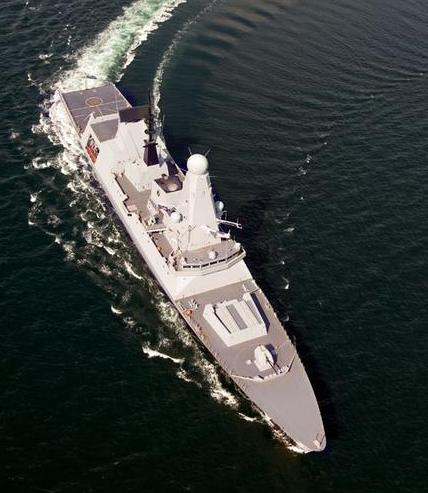This article is more than 1 year old
Navy's £1bn+ destroyers set to remain unarmed for years
Ex-British miracle missiles in new test FAIL
The "Sea Viper" missile system for the Royal Navy's new Type 45 destroyers looks set to suffer further setbacks following a reported failure during test firings. The weapons are already so late that the first £1bn+ Type 45 has been in naval service for nearly a year - almost completely unarmed.

Might as well park her up for a bit, lads. You're wasting your time
News of the test failure comes courtesy of the Ares blog, reporting remarks by Andrew Tyler of the UK Defence Equipment and Support (DE&S) organisation.
“[The test failure] has been a setback," says the MoD mandarin.
“We are working extremely hard with the other partner nations and the company to resolve what the problems were with the final firing ... [It is] too early to come up with the diagnosis.”
Sea Viper is the Royal Navy's name for its version of the Principal Anti Air Missile System (PAAMS), European industry's answer to the highly successful American Aegis/Standard, which has nowadays developed to the point of being able to shoot down satellites in low orbit. Sea Viper/PAAMS is largely French and Italian in origin, but includes some British technology too.
The system's promised special sauce is that it is supposed to be able to knock down supersonic sea-skimming antiship missiles, a thing that even the latest Standard SM-2s may be unable to do. Such missiles are a terrible threat to surface ships without air cover, as they will only be seen by a mast-mounted radar as they emerge above the horizon during the final minute of their flight. Sea Viper/PAAMS is supposed to be able to detect a hostile shipkiller the second it appears, fire an Aster countermissile almost instantly, tip the Aster over from its vertical launch and fly it to intercept the shipkiller head-on at a closing speed in excess of Mach 5.
There has always been some doubt as to whether this is worth doing - it would be cheaper and simpler to deliver maritime air cover from carriers than provide every convoy or task group with a screen of £1bn+ destroyers. Airborne radar can cover vast areas of ocean, tracking sea-skimmers over their entire flight, and patrolling jets would have a much easier task taking down the shipkillers with time in hand from behind - or, even easier, attacking the plane or ship carrying them.
